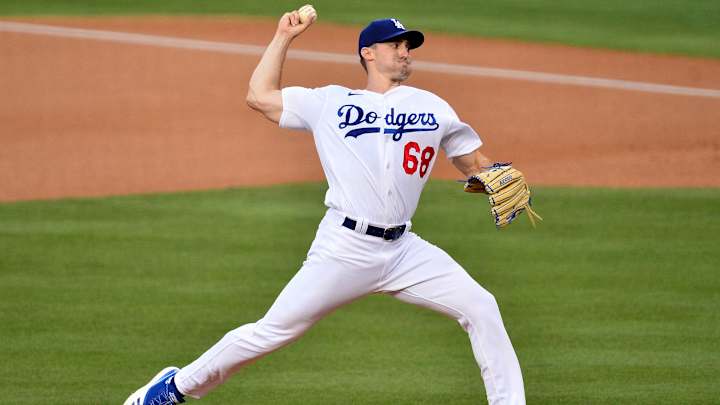Why Shorter Starts for Pitchers Shouldn't Be Surprising in 2020

COVID-19 has accelerated preexisting tendencies more so than it has established new ones. Which you probably know, because you’ve read something in the last few months about retail, or work culture, or housing insecurity, or any of the myriad other sectors of which this is true. And it fits for baseball, too—in several areas, but perhaps none so much so as starting pitching.
The average length of a start has been dropping steadily for about a century. (After a brief period of stability that lasted from the start of the modern era in 1901 to around 1920, when relief pitching started to become a real factor, it’s been downhill ever since.) The shift over the last decade has been especially pronounced, as teams have embraced more flexible bullpen management, with the length of the typical start coming in at a record low 5.2 innings in 2019. Now? So far in 2020, the average start lasts just 4.7 innings.
Of the 26 starters in Monday’s games, 16 did not have the opportunity to finish the fifth inning. There was but one who was allowed to finish the seventh. (Congratulations to Zac Gallen of the Diamondbacks.) And there were four games in which neither starter even got out of the fourth. Just a few years ago, this would have been reason for concern, a freak night on which everyone was either getting shelled or getting hurt. In 2020, however, it’s more or less … normal.
There are several factors here. After the uneven schedule of the spring and summer, teams are worried about pitcher injuries, with managers keeping a close eye on the workloads of their starters. (So far, this worry has unfortunately been proved justified, with a slew of health issues cropping up among pitchers in the first few weeks of the season.) There’s further incentive to be careful in the fact that there are fewer days off than there would be in a typical season, and there are also more doubleheaders, which can limit innings naturally. Unsurprisingly, bullpen games are more common. And a skipper who wants to be more cautious with his starters has more room to do so: MLB’s expanded rosters of 28 men offer space for bigger ‘pens. Add all this together, and it’s little wonder that there have been more pitchers in three weeks of 2020 than there were in the entire season in 2001. There are simply more relievers to use and more reasons to pull starters quickly.
That’s what’s new here. But those factors come on top of an existing trend that was pointing this direction, anyway:
Yes, that’s a significant downturn at the end there. (It’s the biggest year-to-year change since 1974, when baseball introduced a new definition of the save that triggered different use of relievers.) But it’s also not that out of line with what has been happening in the last few years. As ‘pen management has been revolutionized over the last half-decade—there’s no longer so much emphasis on the rigid roles of “set-up guy” and “closer”—managers have become more willing to turn to their relief corps earlier in games. The “opener” has been introduced to further blur the lines here. And pitchers are throwing harder across the board, which requires shorter outings for everyone, regardless of role. MLB hasn’t quite reached a totally deconstructed pitching staff—but it’s close. This was all in motion before 2020. Now, it’s just been sped up.
So will it stay? Probably not quite like this. If all goes according to plan, 2021 will not have an irregular spring training that causes injury concerns, and rosters should be set at 26 men rather than 28. But, just as it did before the pandemic, the general trend seems likely to hold. Hold tight to your memories of the days when starters regularly went six innings—or (gasp!) seven— because they may not be coming back.
Quick Hits
• MLB has crossed a new threshold in ways to make you feel old: Nationals second baseman Luis Garcia became the first player born in the 21st century to hit a major-league home run.
Luis Garcia, the youngest player in MLB, put the #Nats on the board with his first career homer. pic.twitter.com/2xNyKyTKFV
— MLB Pipeline (@MLBPipeline) August 17, 2020
• The good news for the Marlins: All of their players sidelined by the coronavirus are now back to training at their alternate site. The bad: The team finally fell out of first place on Monday with a loss to the Mets.
• Fernando Tatís Jr. hit two home runs in the Padres’ blowout victory over the Rangers—one of which did not sit well with Texas skipper Chris Woodward.
Rangers manager Chris Woodward on Fernando Tatis Jr. swinging 3-0 on his grand slam: "I didn't like it personally. You're up by 7 in the 8th inning, it's typically not a good time 3-0. It's kind of the way we were all raised in the game. But ... the norms are being challenged."
— Sam Blum (@SamBlum3) August 18, 2020
• Kyle and Corey Seager played against each other for the first time in the majors—and they both homered. Aww.

Emma Baccellieri is a staff writer who focuses on baseball and women's sports for Sports Illustrated. She previously wrote for Baseball Prospectus and Deadspin, and has appeared on BBC News, PBS NewsHour and MLB Network. Baccellieri has been honored with multiple awards from the Society of American Baseball Research, including the SABR Analytics Conference Research Award in historical analysis (2022), McFarland-SABR Baseball Research Award (2020) and SABR Analytics Conference Research Award in contemporary commentary (2018). A graduate from Duke University, she’s also a member of the Baseball Writers Association of America.
Follow emmabaccellieri